Special Report
17 Ways Young People Die

Published:
Last Updated:

In 2015, the U.S. life expectancy decreased for the first time since 1993. In addition to a significant increase in overall deaths from heart disease, some researchers noted an increase in mortality among young people, specifically from preventable causes such as drug overdose, homicide, and suicide.
People aged 65 and older accounted for approximately 73% of all deaths in the United States in 2015. Deaths among older Americans were caused mostly by heart disease, cancer, chronic lower respiratory disease, and stroke.
While 18 to 34 year olds accounted for just 3% of all fatalities, young people are 35% more likely to die of an accidental poisoning than the population as a whole, 42% more likely to die in a car accident, and more than twice as likely to die of a firearm-related homicide.
To determine the leading causes of death for young people, 24/7 Wall St. reviewed mortality data from the Centers for Disease Control and Prevention for Americans aged 18 to 34 years old. In 2015, 17 causes of death each accounted for more than 500 deaths in the age cohort.
Click here to see the leading cause of death among young people.
Click here to see our detailed findings and methodology.

17. Accidental fall
> Number of 2015 deaths, 18-34 year olds: 510
> Pct. of all 2015 deaths, 18-34 year olds: 0.7%
> Pct. of all 2015 deaths, all ages: 1.2%
Approximately 500 young people fell to their death in 2015, accounting for 0.7% of all deaths of Americans between the ages of 18 and 34. While accidental falls are one of the leading causes of death for young people, they are still about nine times less likely to die from a fall than the average person. Of the 1.3 million falls by 18 to 34 year olds reported to emergency rooms in 2015, only 0.04% were fatal. By comparison, 0.36% of the 9.4 million falls by people of all ages ended in death. While 18 to 34 year olds account for 23.4% of the U.S. population, they account for just 1.5% of all accidental falling deaths.
[in-text-ad]

16. Influenza and pneumonia
> Number of 2015 deaths, 18-34 year olds: 546
> Pct. of all 2015 deaths, 18-34 year olds: 0.7%
> Pct. of all 2015 deaths, all ages: 2.1%
While most Americans recover from the flu within two weeks, the disease can sometimes turn deadly. The people at the highest risk of death or prolonged flu symptoms include children younger than 2 years old, adults 65 and over, and pregnant women. Influenza is the most common viral cause of pneumonia, which can cause fatal bleeding in the lungs. Influenza and pneumonia killed 546 Americans between the ages of 18 and 34 in 2015, 0.7% of all deaths in the age cohort. Still, young people are far less likely to die from influenza or pneumonia, and diseases in general, than the average American. The age cohort of young adults accounts for just 1.0% of the 57,062 Americans who died from influenza or pneumonia in 2015.

15. Complicated pregnancy
> Number of 2015 deaths, 18-34 year olds: 576
> Pct. of all 2015 deaths, 18-34 year olds: 0.7%
> Pct. of all 2015 deaths, all ages: <0.1%
Despite the drop in teen birth rates, the increase in birth control usage, and the widespread access to family planning and abortion services, the number of deaths due to pregnancy complications has increased in the United States in recent years. The United States is an outlier compared to the rest of the world, which saw a global drop in maternal deaths of more than one-third from 2000 to 2015. Over the same period in the United States, the number of deaths due to complicated pregnancy rose from 271 among 18 to 34 year olds to 576 — a significant increase even after controlling for population growth. As a result, complicated pregnancies rose from the 10th leading cause of death among U.S. women 18 to 34 years old to the sixth.
According to some researchers, the increase is due to an uptick in preventable health conditions such as diabetes and obesity, which can lead to cardiovascular disease and heart failure during pregnancy.
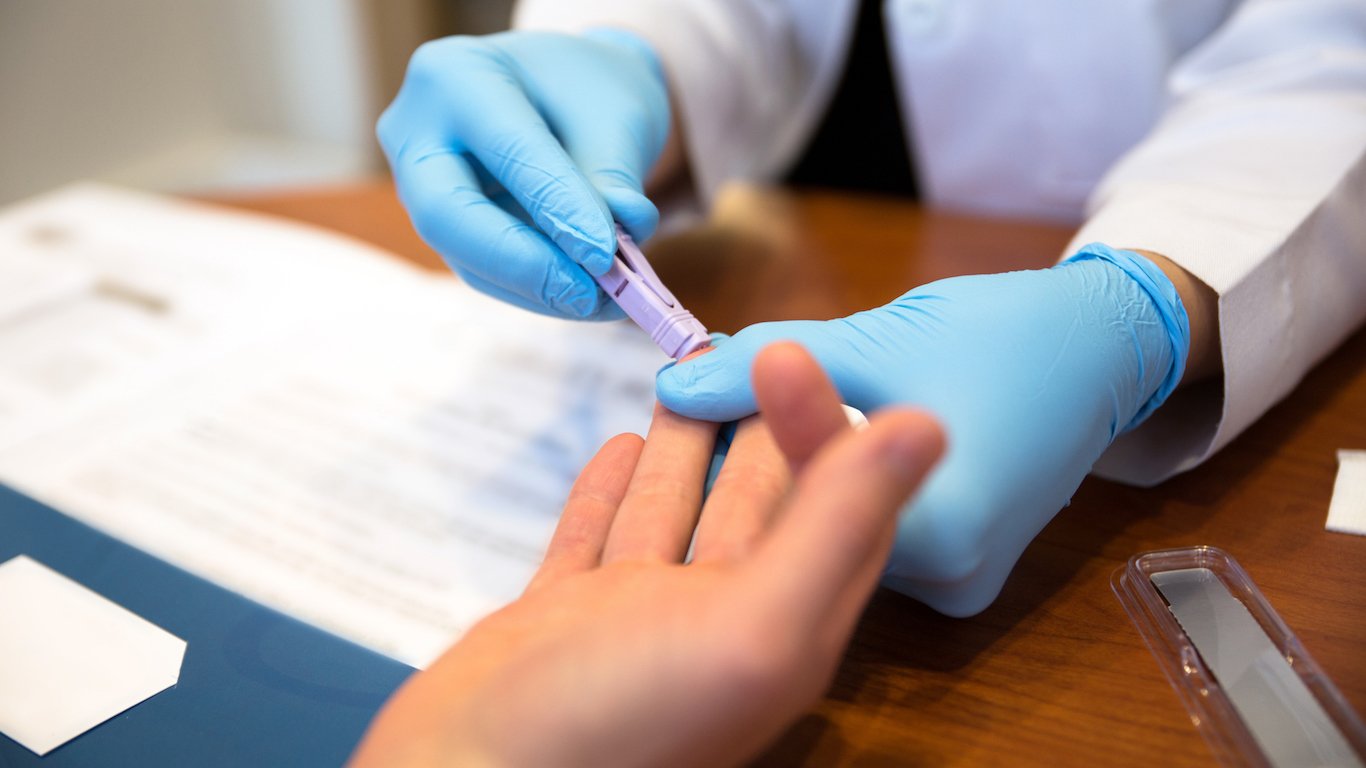
14. HIV
> Number of 2015 deaths, 18-34 year olds: 626
> Pct. of all 2015 deaths, 18-34 year olds: 0.8%
> Pct. of all 2015 deaths, all ages: <0.3%
HIV attacks the immune system, weakening the body’s ability to fend off disease. AIDS, the final stage of HIV, currently has no cure. Young people are more likely to take risks such as using illegal substances or having unprotected sex. Such risks and other behaviors increase the odds of contracting HIV and sexually-transmitted diseases generally.
The disease continues to be most prevalent among gay and bisexual men, and younger individuals are particularly at risk. While the incidence of HIV has stopped increasing in recent years among the risk group, men who have sex with men make up approximately 4% of the U.S. population but over half of the estimated 1.1 million people living with HIV. According to the CDC, the experience of homophobia, stigma, and social discrimination can lead to physical and mental health problems that hinder the ability and willingness to obtain high quality health services. This may also help explain the greater risk among gay men of death from HIV.
[in-text-ad]
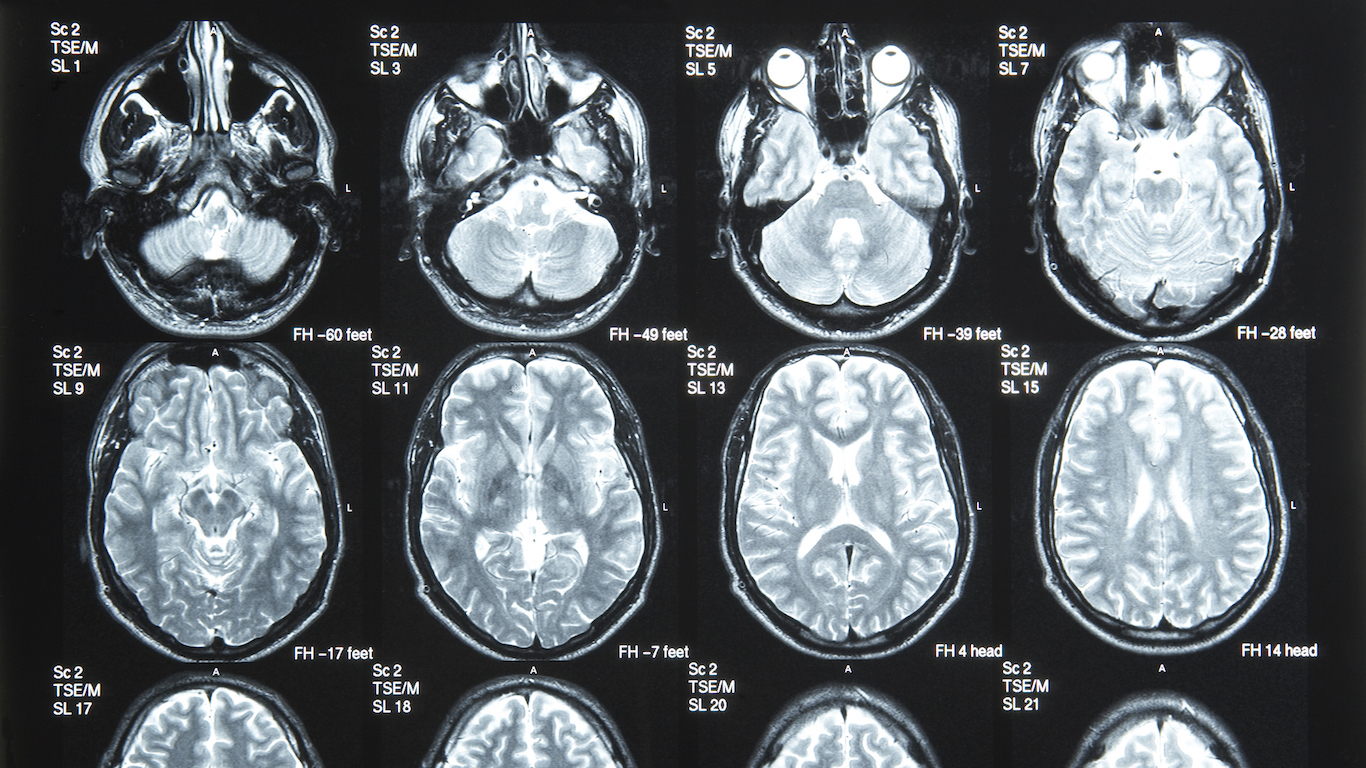
13. Cerebrovascular
> Number of 2015 deaths, 18-34 year olds: 702
> Pct. of all 2015 deaths, 18-34 year olds: 0.9%
> Pct. of all 2015 deaths, all ages: 5.2%
While cerebrovascular accidents, or strokes, disproportionately affect older people — Americans 65 and over accounted for 86% of all stroke fatalities in 2015 — young people can also be rarely affected. Approximately 700 people between the ages of 18 and 34 died from stroke in 2015, or 0.9% of all deaths in the age cohort. Because risk factors such as drug and alcohol use that are associated with stroke are highly prevalent among young adults, they are also at risk for stroke. Further, younger people are more likely to be misdiagnosed after having a stroke, which increases the chance of having another.
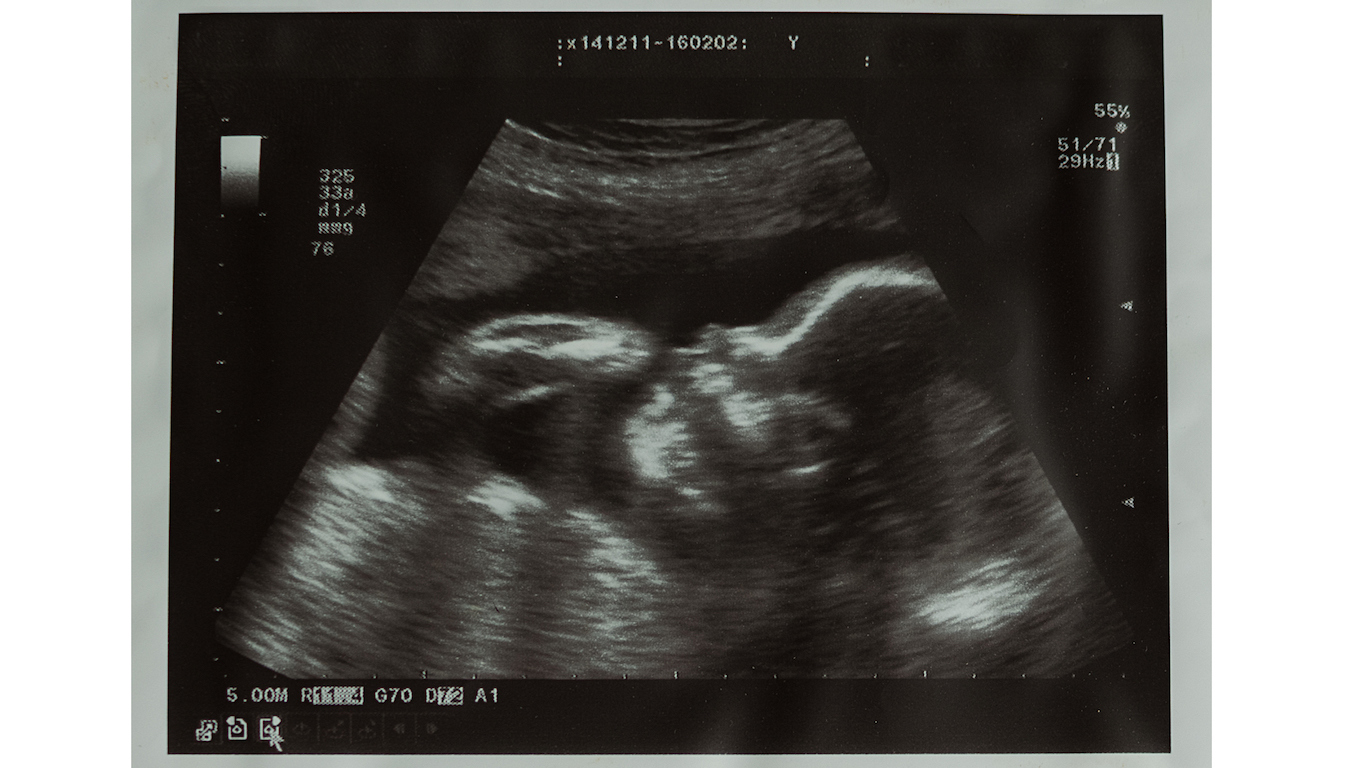
12. Congenital anomalies
> Number of 2015 deaths, 18-34 year olds: 715
> Pct. of all 2015 deaths, 18-34 year olds: 0.9%
> Pct. of all 2015 deaths, all ages: 0.4%
There is a wide array of birth defects, each with its own effect on human growth and development, and babies born with congenital anomalies tend to have shorter lifespans. Nearly 50% of all people who died of congenital anomalies in 2015 were newborns. While congenital anomaly-related deaths tend to skew young, they are actually far less common in young adults than in older Americans. There was approximately one birth defect fatality per 100,000 18 to 34 year olds in 2015, half as many as occurred per capita among Americans aged 35 to 65. While most congenital anomalies require a lifetime of extensive medical care and regular doctor visits, most who survive childhood and adolescence live long lives.

11. Accidental drowning
> Number of 2015 deaths, 18-34 year olds: 830
> Pct. of all 2015 deaths, 18-34 year olds: 1.1%
> Pct. of all 2015 deaths, all ages: 0.1%
There were 830 unintentional drownings of people 18 to 34 in 2015, excluding deaths that occurred in boating accidents. Over the last 10 years, approximately 10 people accidentally drowned on average every day. Of these, two were of children under the age of 15. Among very young children 1 to 4 years old, drowning causes more deaths than any other cause except for birth defects. Drowning is the 11th leading cause of death among young people 18 to 34 years old, and in the 25 leading causes of death across all age groups.
According to the CDC, deaths among very young children occur most frequently in home swimming pools. Drownings among people 15 and over occur most often in natural water formations such as rivers, streams, lakes, and oceans. Among adolescents and adults, alcohol is involved in 70% of deaths associated with water recreation.
[in-text-ad]

10. Liver disease
> Number of 2015 deaths, 18-34 year olds: 870
> Pct. of all 2015 deaths, 18-34 year olds: 1.1%
> Pct. of all 2015 deaths, all ages: 1.5%
While liver disease disproportionately affects middle-aged adults — Americans 45 to 64 years old account for 55% of all deaths due to complications of the liver — young adults are not immune to cirrhosis and other chronic liver disease. With 870 fatalities among 18 to 34 year olds in 2015, liver disease is the 10th leading cause of death for the age cohort. Most liver disease cases are preventable. Risk factors include alcohol use, diabetes, and obesity.
The incidence of liver disease is increasing among young people. While teen smoking rates have declined over the past few decades, the prevalence of obesity, diabetes, and other health outcomes associated with unhealthy behavior have increased among young adults, leading to an increased risk of liver disease for the age group. Adjusted for population changes, the number of liver disease fatalities among 18 to 34 year olds has risen 70% since 2000.
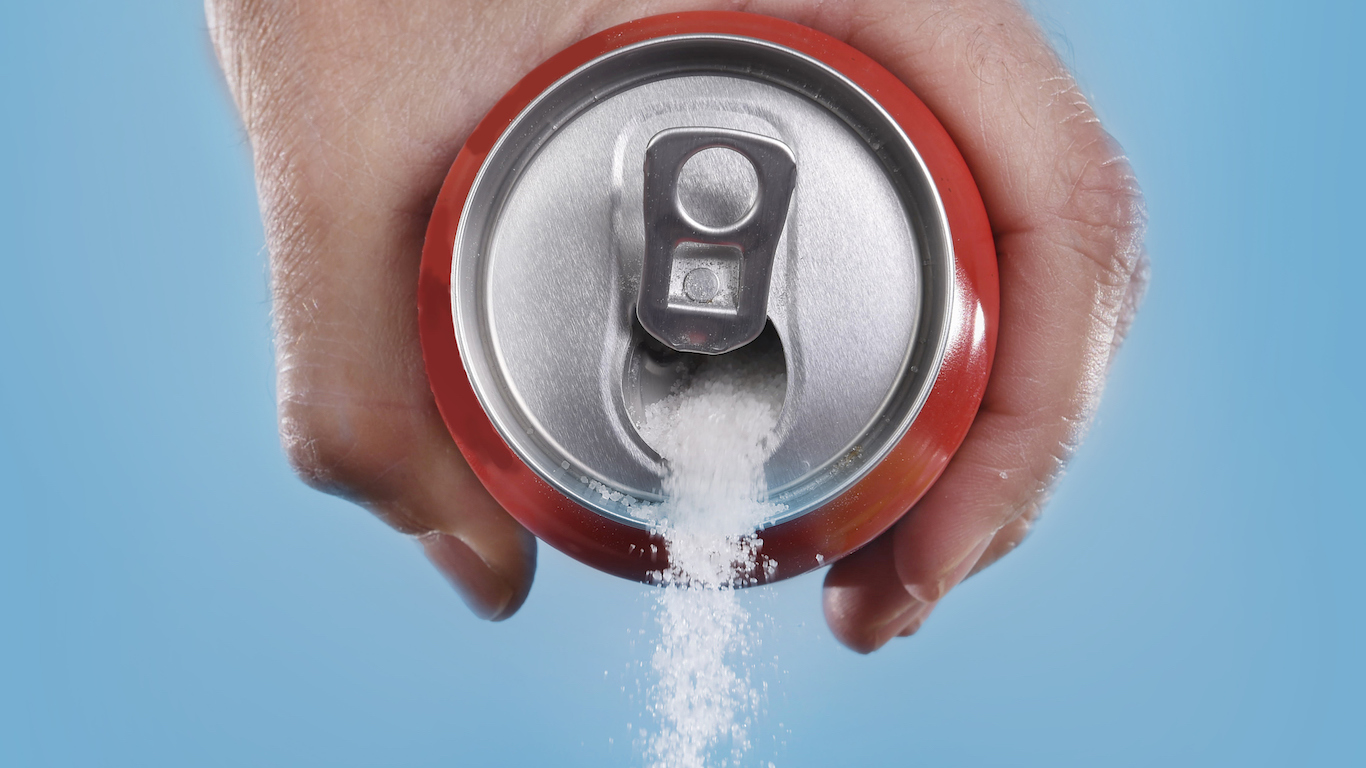
9. Diabetes mellitus
> Number of 2015 deaths, 18-34 year olds: 978
> Pct. of all 2015 deaths, 18-34 year olds: 1.3%
> Pct. of all 2015 deaths, all ages: 2.9%
Diabetes mellitus is a disease that hinders the body’s ability to produce or utilize insulin, a hormone that helps the body regulate metabolism of carbohydrates. As a result, sugar builds up in the bloodstream and can cause several complications, including increased risk of heart disease, kidney failure, stroke, and more. According to the American Heart Association, approximately 80% of people with diabetes eventually die of causes related to blood clots.
Between 90% and 95% of all diagnosed diabetes cases are type 2, which is largely preventable. While most diabetes fatalities in the United States are of older Americans, young people can be at risk. In 2015, 978 people between 18 and 34 years old died from diabetes. While diabetes is the ninth leading cause of death in the age cohort, fatalities related to the disease among the age group amount to just 1.2% of all diabetes deaths nationwide.

8. Suicide by poisoning
> Number of 2015 deaths, 18-34 year olds: 1,118
> Pct. of all 2015 deaths, 18-34 year olds: 1.4%
> Pct. of all 2015 deaths, all ages: 0.3%
Methods of suicide are numerous, easy to access, and horrible to contemplate. According to the CDC, an estimated 1.3 million adults aged 18 or older attempted suicide in 2015. While poisoning is not the most common method of suicide among people aged 18 to 34, more than 1,000 young people used poison to commit suicide in 2015. These fatalities accounted for approximately 1.4% of all deaths among 18 to 34 year olds that year.
Drug overdoses are counted as accidental poisonings, not suicides. Toxic chemicals used in poisoning suicides can include more than recommended doses of prescription medication, carbon monoxide, and pesticides.
[in-text-ad]

7. Suicide by suffocation
> Number of 2015 deaths, 18-34 year olds: 4,200
> Pct. of all 2015 deaths, 18-34 year olds: 5.4%
> Pct. of all 2015 deaths, all ages: 0.4%
Suffocation is the second most common form of suicide, accounting for 27% of all suicide deaths in the United States. The number of suicides committed annually by Americans between the ages of 18 and 34 has increased in recent years, rising from 8,004 incidents in 2000 to 11,452 in 2015, a 25% increase when adjusted for population. Suffocation has also become a more common method of suicide over the same period, rising from 26% of all suicide deaths among the age cohort to 37%. One frequently used method involves the exit bag, a large plastic bag with a drawstring that suffocates the user by trapping the carbon dioxide exhaled while simultaneously blocking the supply of oxygen. The method is typically used with helium or nitrogen, which inhibits the sense of alarm one feels when deprived of oxygen.

6. Heart disease
> Number of 2015 deaths, 18-34 year olds: 4,359
> Pct. of all 2015 deaths, 18-34 year olds: 5.6%
> Pct. of all 2015 deaths, all ages: 23.4%
Heart disease is the leading cause of death in the United States, accounting for 23.4% of all deaths across all age groups in 2015. The risk of heart attack goes up with age. But even among young people, who compared with the elderly population are generally in better health, heart disease is one of the most common causes of death. Heart disease in younger adults is more often genetic or congenital compared to incidence among elderly Americans. While such hereditary cases do not always have a clear cause, in other cases lifestyle choices can still cause heart disease in young people. Obesity, smoking, diabetes, stress, excessive drug use, and lack of physical activity are risk factors for heart conditions regardless of age.
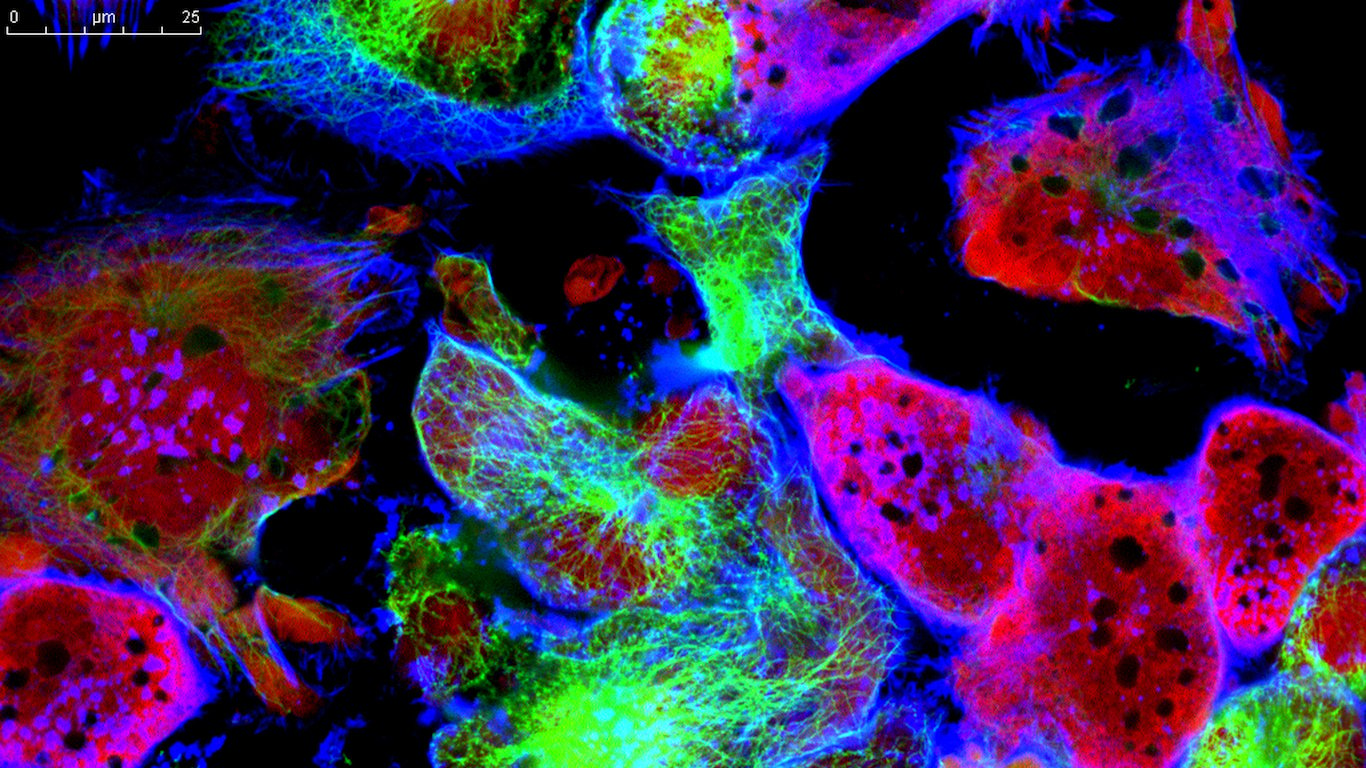
5. Malignant neoplasms
> Number of 2015 deaths, 18-34 year olds: 4,820
> Pct. of all 2015 deaths, 18-34 year olds: 6.2%
> Pct. of all 2015 deaths, all ages: 22.0%
A malignant neoplasm is a cancerous tumor. Cancer is the second leading cause of death among all Americans, and fifth among Americans aged 18 to 34. There were more than 4,800 deaths from cancer among the age group in 2015, 6.2% of all deaths among young people and 0.8% of all cancer deaths nationwide. While it is more common to trace cancer to certain lifestyle factors such as smoking, exposure to radiation, and diet, most diagnosed cases of cancer in young adults. The most common forms of cancer in young people are breast cancer, Hodgkin’s and non-Hodgkin’s lymphoma, skin cancer, and soft tissue sarcoma.
[in-text-ad]

4. Suicide by firearm
> Number of 2015 deaths, 18-34 year olds: 5,153
> Pct. of all 2015 deaths, 18-34 year olds: 6.7%
> Pct. of all 2015 deaths, all ages: 0.8%
Guns are more often used to commit suicide than for lethal violence against others. And, of all methods of committing suicide, the use of a firearm is the most common. The three most common forms of suicide — firearms, suffocation, and poisoning — were broken down for this list. Had they been combined, suicide would be the third leading cause of death among young people in the United States. Nearly a quarter of all suicides by firearm were committed by people 18 to 34 years old. Tragically, often due to guns being improperly stored inside the home, firearms are also among the most common methods of suicide by youths under 18.

3. Homicide by firearm
> Number of 2015 deaths, 18-34 year olds: 7,599
> Pct. of all 2015 deaths, 18-34 year olds: 9.8%
> Pct. of all 2015 deaths, all ages: 0.5%
Americans between the ages of 18 to 34 account for 23.4% of the U.S. population, but 58.5% of all firearm-related homicides. Gun violence disproportionately affects young people, especially in poor neighborhoods with high crime rates and gang activity. The seats of the counties with the highest rates of firearm-related homicides per capita among 18 to 34 year olds include New Orleans, Louisiana; Clarksdale, Mississippi; Petersburg, Virginia; Tuskegee, Alabama; Baltimore, Maryland; and St. Louis, Missouri, which also have some of the highest poverty rates in the country. Young people are more than twice as likely to die of gun-related homicide than the average American.
Some policy experts believe the country’s lax gun laws are to blame for the high prevalence of firearm-related deaths in the United States. Adding the death toll from suicide and accidental deaths by firearm to firearm-related homicides, guns account for 17% of all deaths among 18 to 34 year olds.

2. Motor vehicle accident
> Number of 2015 deaths, 18-34 year olds: 12,052
> Pct. of all 2015 deaths, 18-34 year olds: 15.6%
> Pct. of all 2015 deaths, all ages: 1.3%
Car accidents killed 36,161 people in 2015. About a third, or just over 12,000, of these fatalities were of people aged 18 to 34. Motor vehicle accidents accounted for 15.6% of all deaths in this age group. According to the CDC, young people and especially teens, are more likely than older drivers to underestimate or fail to recognize hazardous situations and are more likely to take risks such as speeding, driving without a seatbelt, and driving while intoxicated. As is the case across all age groups, males are considerably more likely than females to engage in such risky behavior. Among 18 to 34 year olds who in 2015 died in motor vehicle accidents, 74% were male.
[in-text-ad]

1. Accidental poisoning
> Number of 2015 deaths, 18-34 year olds: 14,997
> Pct. of all 2015 deaths, 18-34 year olds: 19.4%
> Pct. of all 2015 deaths, all ages: 1.8%
Accidental poisoning, primarily drug overdose, is the leading cause of death among young people in the United States. Approximately one in every five deaths of people 18 to 34 are caused by unintentional poisoning.
Most drug overdose deaths, about 60%, involve opioids such as heroin and prescription drugs. According to the CDC, 91 people on average die every day from opioid overdoses. While far more prevalent in some parts of the country than in others, opioid overdoses have grown to epidemic proportions in recent years. Prescription drugs such as oxycodone, hydrocodone, and methadone have been driving the increase in opioid overdoses. These prescribed drugs are sold today at four times the rate they were at the turn of the century, despite the fact that Americans report the same level of pain today as then.
Detailed Findings and Methodology:
In recent years, the opioid epidemic has led to an increase in the number of deaths among young people and contributed to the first increase in the U.S. death rate in a decade. Accidental poisoning fatalities — which mostly result from drug overdoses — surpassed car accidents in 2013 as the leading cause of death among 18 to 34 year olds.
People are more likely to die of different causes at different ages. During infancy and childhood, toddlers are most likely to die from birth defects and unintentional injuries such as drowning or suffocation. For people 65 and older, the leading causes of death are diseases associated with old age and poor health such as heart disease, cancer, and chronic lower respiratory diseases. As people transition from teenagehood to young adults, the number one leading cause of death changes from car accidents to accidental poisoning, likely due to drug overdose.
Young people are more likely to die from causes associated with risky behavior than disease. While injuries account for less than one in every 10 deaths in the general population, they comprise more than two in every three deaths among 18 to 34 year olds. Young people engage in risky sexual behavior, substance abuse, and violence more often than the general population, which increases their likelihood of falling victim to such tragedies as homicide, death by drowning, HIV, and fatal pregnancy complications.
Americans aged 65 and older account for 97% of all disease- and other non-injury-related deaths. In old age, these ailments tend to be the consequence of experiences and choices accumulated over a lifetime. Cancer, heart disease, and other life-threatening diseases can often be attributed to years of smoking, and long exposure to other harmful materials in the environment.
In younger people, by contrast, life-threatening diseases are often inherited, and tend to have less clear causes. Still, a small portion of cancer cases and other serious diseases in young people can be the result of lifestyle choices and exposure to harmful environmental factors.
To determine the leading causes of death for young people, 24/7 Wall St. reviewed mortality data from the Centers for Disease Control and Prevention for Americans aged 18 to 34 for 2015. Mortality data by cause of death for all ages also came from the CDC and is for 2015. For the broader groupings — unintentional injury, suicide, and homicide — the cause of death was broken down into subcategories such as poisoning, motor vehicle accident, firearm, etc. Population data also came from the CDC.
Are you ready for retirement? Planning for retirement can be overwhelming, that’s why it could be a good idea to speak to a fiduciary financial advisor about your goals today.
Start by taking this retirement quiz right here from SmartAsset that will match you with up to 3 financial advisors that serve your area and beyond in 5 minutes. Smart Asset is now matching over 50,000 people a month.
Click here now to get started.
Thank you for reading! Have some feedback for us?
Contact the 24/7 Wall St. editorial team.